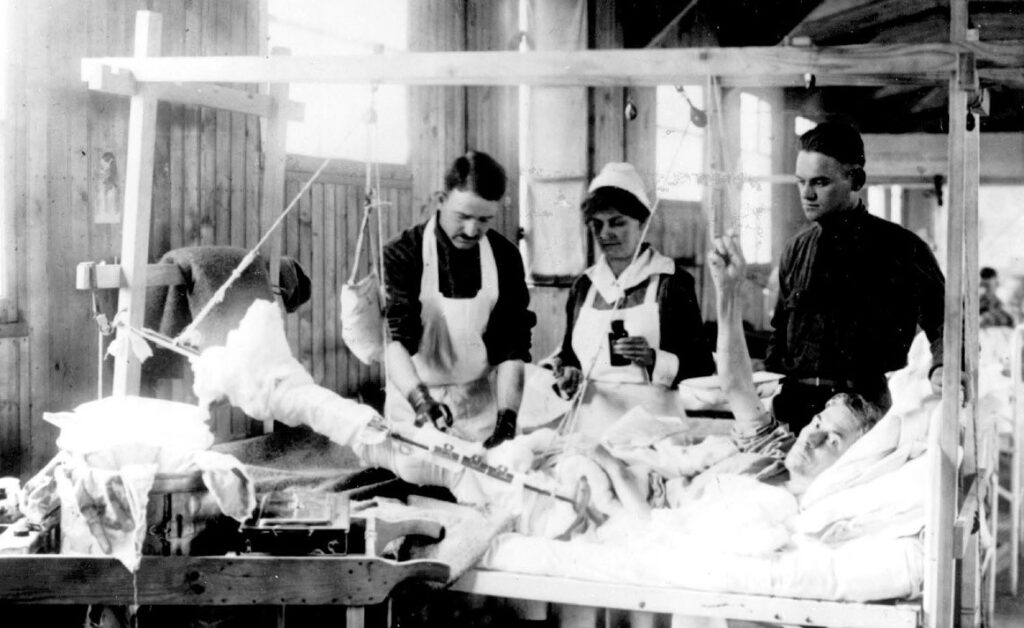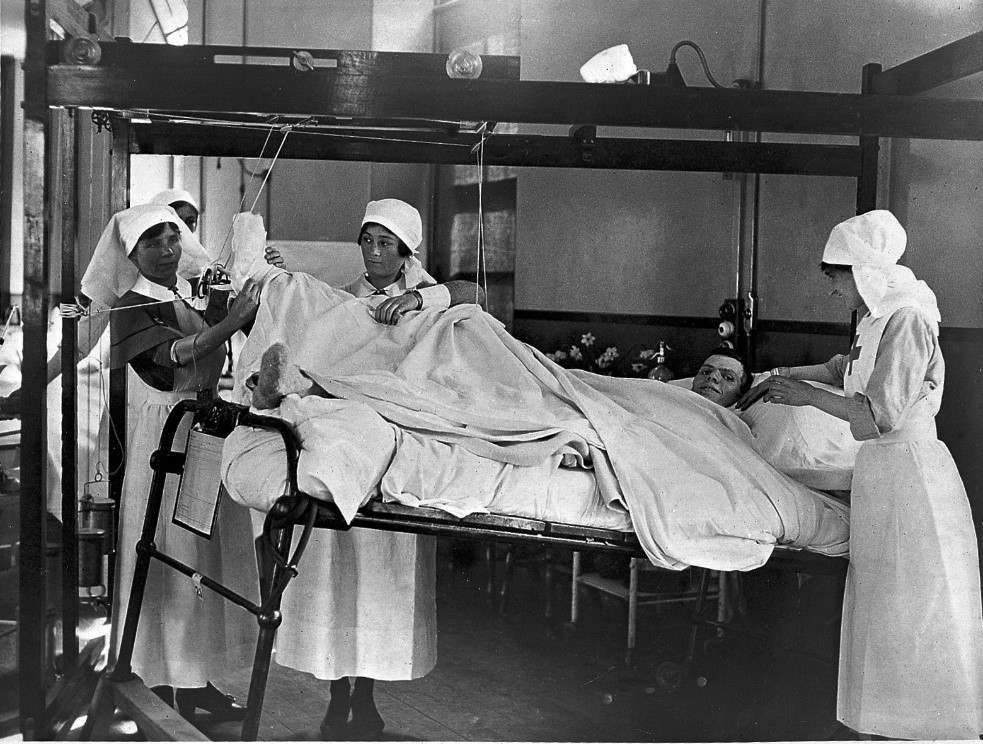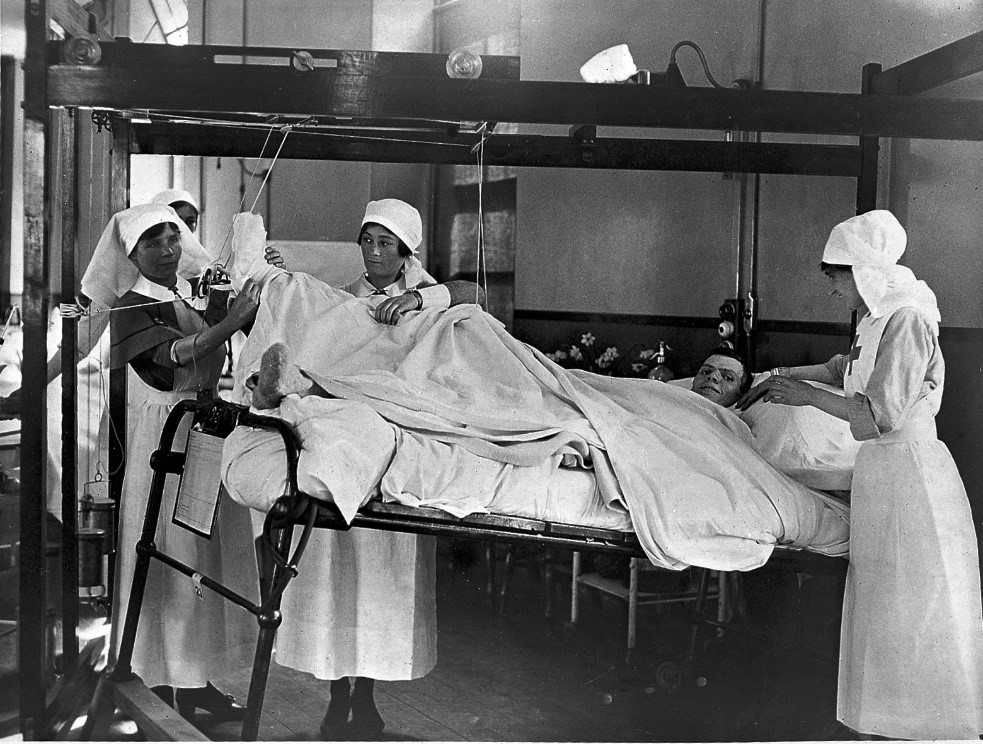As a German plane buzzed overhead, nurse Helen Dore Boylston dropped face down in the mud. Boylston, an American nurse, serving at a British Army base hospital near the Western Front in 1918, had been running between wards of wounded patients that night, trying to calm their nerves during the air raid. Now, all she could do was brace herself for the hissing bomb that hurtled toward her. She covered her eyes and ears against the deafening roar and “blood-red flare.” About a half-hour later, finally realizing she had not been hurt, Boylston stopped shaking.
The Account of World War I Experience as a Nurse
Boylston’s vivid account of her World War I experience as a nurse, published in 1927, depicts her work with the first Harvard Unit, a U.S. medical team that treated more casualties than any other American doctors group and nurses during the conflict. In May 1917, U.S. medical teams became the first American troops to arrive in the war zone, and many remained through mid-1919.

Over 22,000 female Nurses Were Recruited by the American Red Cross
Over 22,000 professionally-trained female nurses were recruited by the American Red Cross to serve in the U.S. Army between 1917 and 1919 – and over 10,000 of these served near the Western Front. More than 1,500 nurses served in the U.S. Navy during this period, and several hundred worked for the American Red Cross. Additionally, a handful, like Boylston, worked in American units of the British and French armies. The U.S. military rejected overseas service nurses who were African Americans or immigrants, despite drafting men from these groups.

War nursing’s more common hazards included infected fingers, sickness, and physical strain. “My back is busted in two tonight. Slowly, [moving] down the ward, doing the dressings and making the beds,” Boylston wrote in her diary. This frequent changing of dressings and antiseptic application, though physically exhausting, served a critical medical function in the pre-antibiotic era: It became the most effective method for healing infected war wounds and prevented many limb amputations.

Although Allied military leaders wanted to keep the (female) nurses far from danger, they soon realized that many more combatants’ lives could be saved if wounds were first treated near the front rather than at far-away base hospitals. Numerous nurses served at front-line casualty clearing stations or with forwarding units. In August 1917, U.S. Army nurse Beatrice MacDonald, on duty at a casualty clearing station, came under enemy fire during an air raid, and fragments of shrapnel from a bomb blast sliced through her eye. MacDonald refused orders to go home after being evacuated, reportedly stating, “I have just started doing my bit.” MacDonald remained on duty in France until after the armistice and was awarded the Distinguished Service Cross with only one eye.
In her diary, Boylston also described the social side of war – how ever-present reminders of mortality and military life transience lent special intensity to otherwise ordinary human relationships. For nurses, close friendships became indispensable, while romances served as welcome distractions or led to engagements.
But Boylston differed in some respects from most U.S. military nurses. She was 23 and came from an affluent family, while many U.S. Army and Navy nurses had working-class or rural origins. Laura Huckleberry, who served in Base Hospital №12, the “Northwestern Unit,” more typically exemplifies these nurses. In 1909, she left the Indiana farm where she grew up to study at the Illinois Training School for Nurses in Chicago. After graduating in 1913, Huckleberry worked as a public health nurse investigating contagious diseases in the city’s immigrant neighborhoods. When Huckleberry’s unit sailed to France to take over a British hospital at Dannes-Camiers, she was 29 and already dating the man she would marry, John Erle Davis. During her time at war, Huckleberry wrote over 150 letters to Davis, also stationed in France.

A Campaign to Accord the U.S. Military Nurses Rank
Huckleberry’s letters highlight that U.S. Army and Navy nurses served without rank or commission and that this lack of status created problems. After the Colonel in charge of Huckleberry’s unit unceremoniously replaced their beloved chief nurse with a younger, prettier woman, Huckleberry fumed to Davis in a letter. “If we had the commissions we should have had before leaving the U.S.A., we would not be at the mercy of such men. They would have to give a reason not only to us but to headquarters for such performances.”
Some nursing leaders agreed. A campaign to accord the U.S. military nurses rank, which coincided with the Woman’s suffrage movement, led in 1920 to a compromise in which U.S. Army and Navy nurses were accorded “relative ranks” of Lieutenant, Captain, and Major. Actual commissions would have to wait until 1947.
But the battle for these original commissions is not over. Huckleberry and Davis’s youngest son, Michael W. R. Davis, who has woven his parents’ letters together with diary entries from others in a forthcoming book – has launched a campaign to get the U.S. Army and Navy to posthumously commission his mother and the other World War I American nurses. Davis believes this act would be a fitting way to honor these pioneering and largely unappreciated women veterans on the centennial of the war.

Thank you for the article and for bringing attention to the important work of nurses such as Boylston and MacDonald. It would be useful and informative if you included citations for more of what you describe. For instance, Boylston’s book (which it appears you utilized), and the citations for the photographs you use.